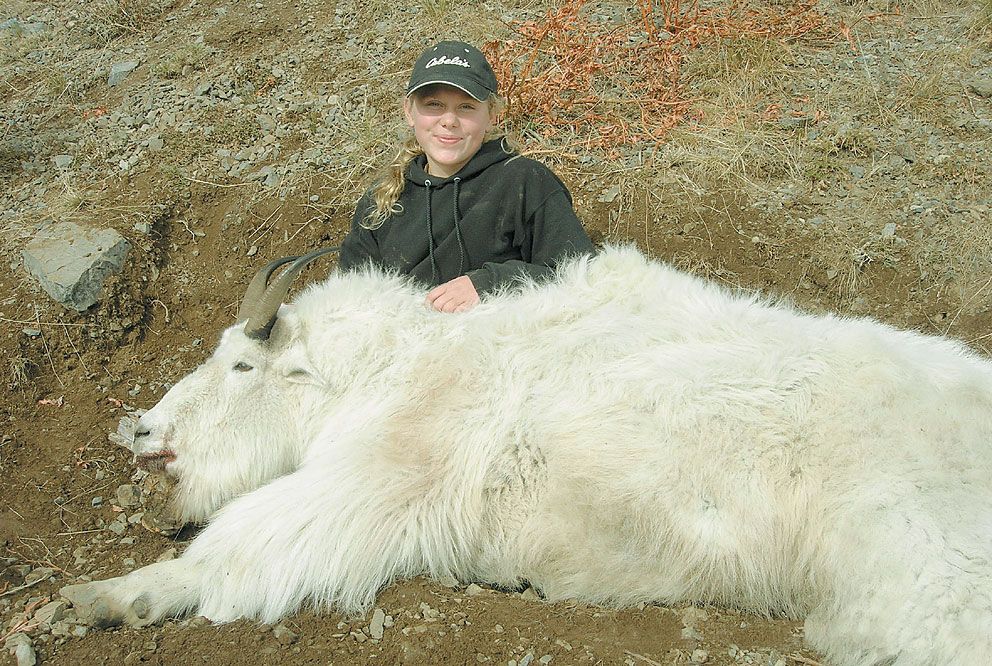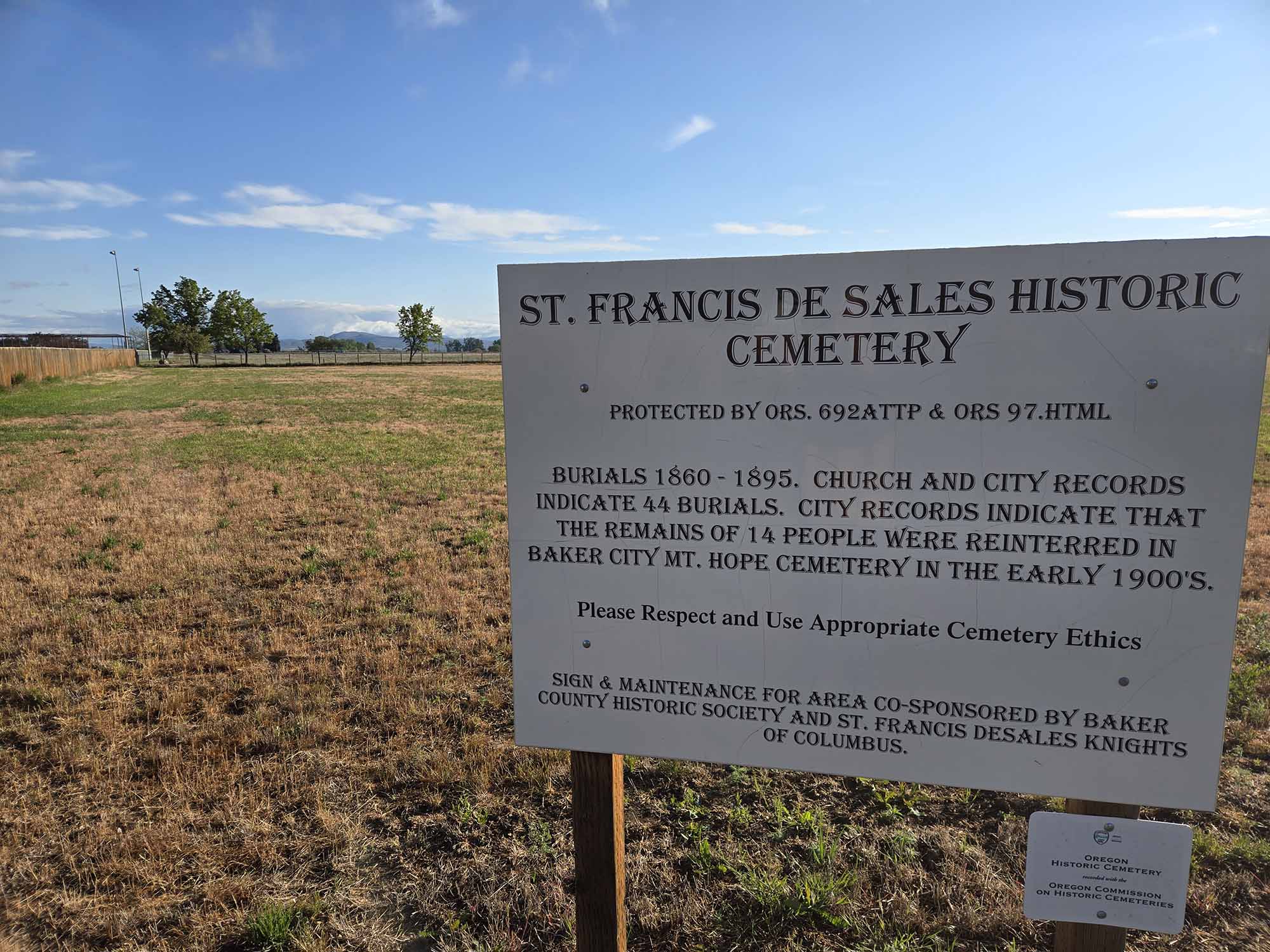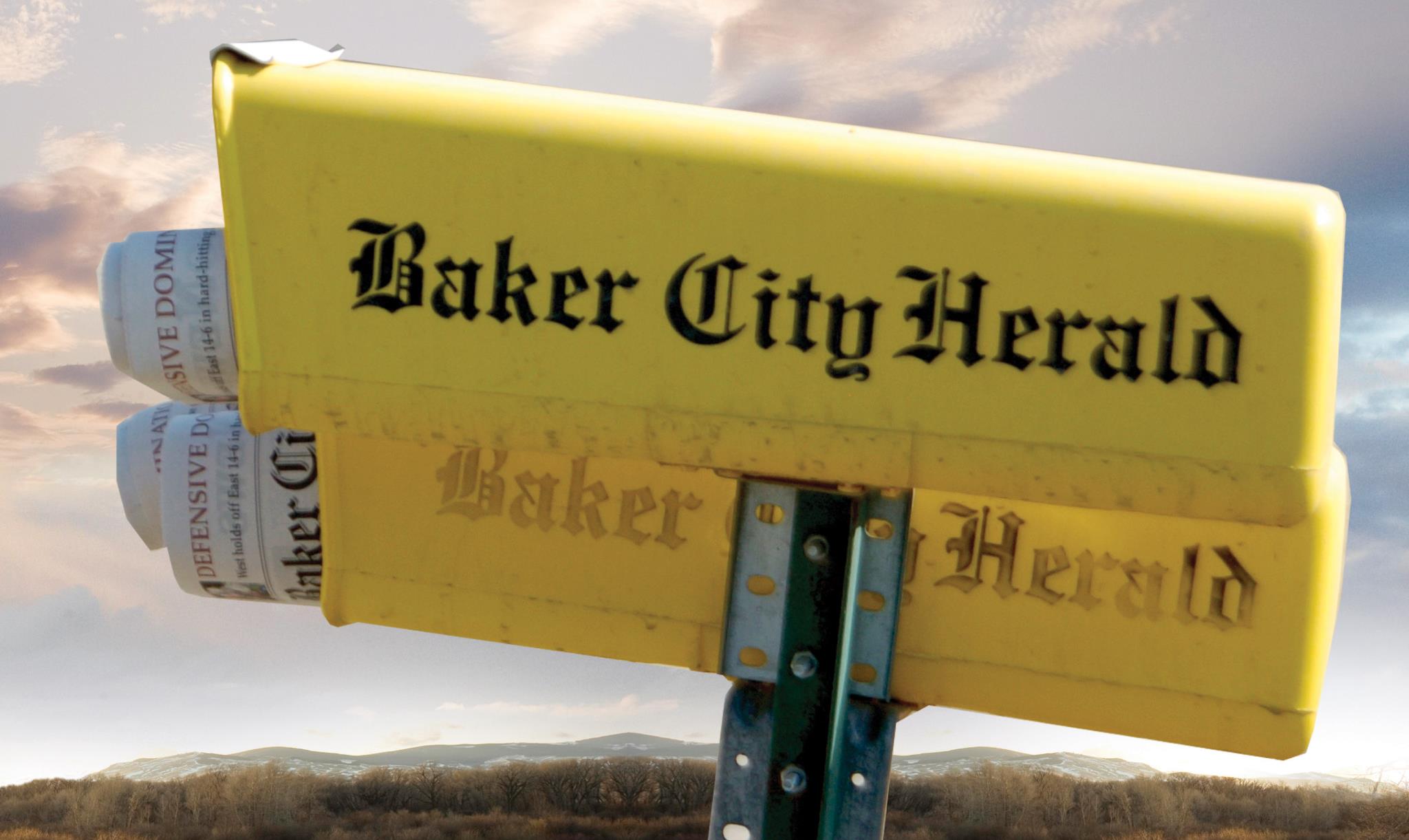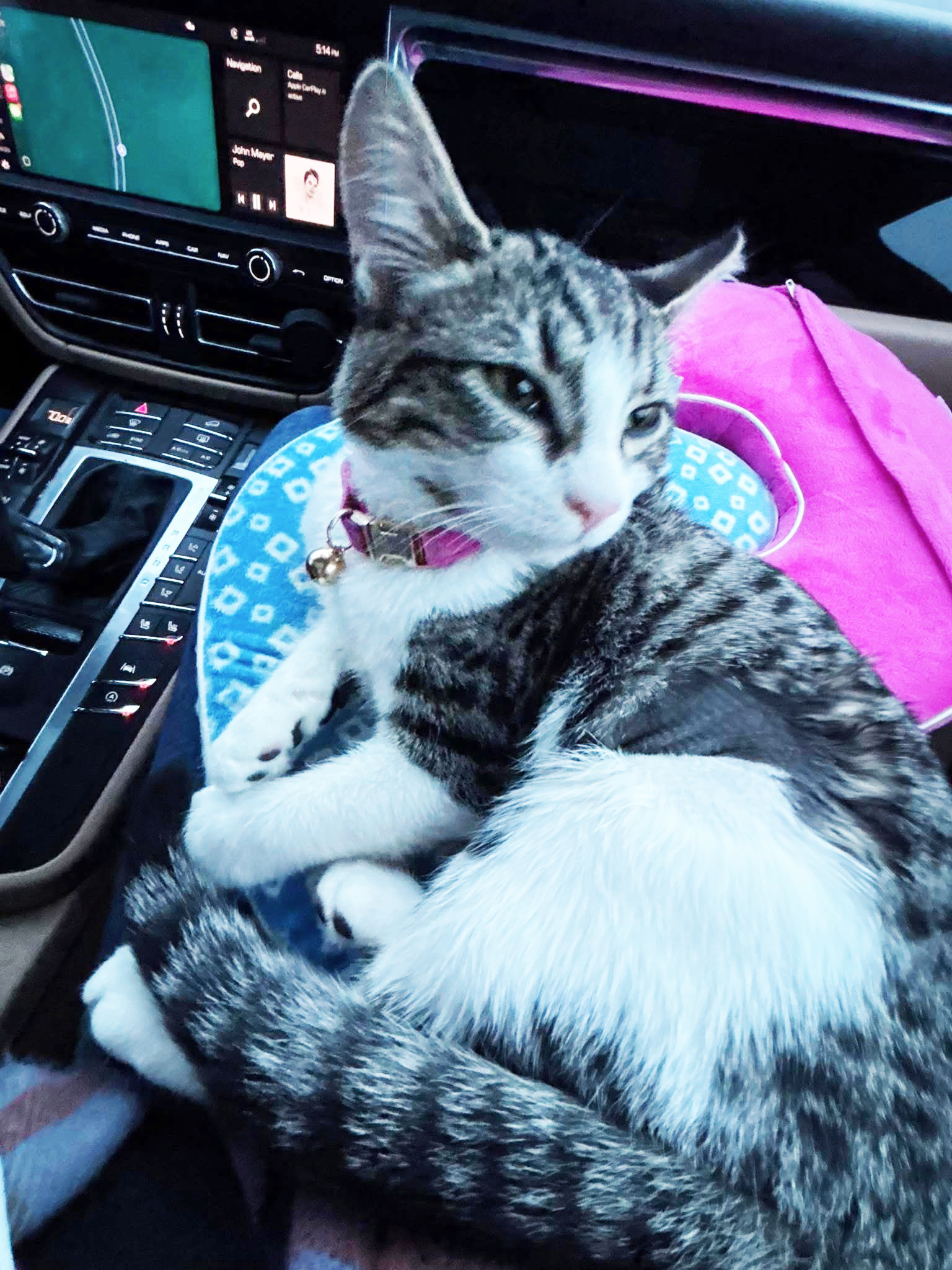First hunt also the last for 12-year-old
Published 11:46 am Friday, October 23, 2009

- Matea Huggins, 12, shot this mountain goat on Oct. 18 in the Elkhorns.
By JAYSON JACOBY
Baker City Herald
Matea Huggins isn’t even a teenager yet but already she’s the star of a
hunting tale that would enchant listeners at any Oregon campfire.
It’s even true, this story.
Truth being a quality which is, well, a bit scarce in many of the yarns spun after dark has come to an autumn hunting camp.
On Sunday Matea, who’s 12, pulled off a feat that fewer than 100
hunters in the state, almost all of them at least twice her age, can
boast about.
Matea bagged a mountain goat.
It was no average billy, either.
And Matea didn’t even have her own rifle.
“My first shot missed,” she said.
Her second shot did not.
“I wasn’t about to let him go,” she said.
Just to be in a position to center her scope on the billy Matea had to defy odds which, though not of Powerball dimension, make most of the games in Vegas seem like solid bets.
This was the first year Matea, who’s a seventh-grader at Baker Middle School, was old enough to apply for big-game hunting tags.
And she put in for most of them, including deer and elk.
“Our whole family are avid hunters,” said Matea’s mom, Laura Huggins.
Laura and her husband, Ed, have a younger daughter, Gracie, 10, and a son, Lukas, 14.
(Gracie shot a cow elk when she was 8 – although you have to be at least 12 to apply for your own tag, Oregon’s mentor program allows younger children who have passed a hunter safety education class to hunt with an adult.)
Laura said she wouldn’t have been surprised had Matea drawn an elk or deer tag.
The state sells thousands of those every year.
But just a dozen goat tags are doled out for three areas: the Elkhorn and Wallowa mountains, and Hells Canyon.
Matea didn’t get a tag for deer or elk.
The tag she did get was for the most coveted of the goat hunts, in the Elkhorns. It’s a tag that thousands of hunters apply for every year – 3,348 last year, to be precise – but almost no hunter truly expects to get.
And with good reason: just four hunters succeeded this year.
“I was really surprised,” Matea said. “But I think everyone else in my family, all the big-time hunters, were a little more surprised.”
That would include her dad.
Ed Huggins was competing in a shooting competition in Bend with his son, Lukas, the day the results of the hunting tag lottery became available on the Internet.
Ed telephoned Laura. She told him it looked as though Matea had a goat tag.
“I said, ‘nah, I don’t think so,'” Ed said.
But when he arrived at home several hours later, Laura had printed the results.
“We should have bought Matea a lottery ticket too,” Ed said. “We could have been rich and had a nice goat.”
The chances of getting a goat tag this year were slightly better than in the past, because for 2009 the Fish and Wildlife Commission added two tags for a new, later hunt in the Elkhorns scheduled from Oct. 17-25 (the two other Elkhorns goat tags were valid from Sept. 12-27).
The idea behind the later hunt is to give hunters a chance to kill a billy with a thicker pelt, said Jamie Nelson, who works at the Oregon Department of Fish and Wildlife’s Baker City office.
Because goats live all winter in the polar conditions high in the Elkhorns, their hair grows thick and long during autumn, Nelson said.
Matea drew one of the two tags for the new October hunt.
“We were all absolutely shocked,” Laura Huggins said. “The only tag she drew, and it was for a once-in-a-lifetime hunt.”
Literally.
Oregon allows hunters to receive only one mountain goat or bighorn sheep tag.
Hundreds of hunters have tried to secure a goat tag every year since the state authorized the first Elkhorns hunt in 1997.
And almost every one of those hunters has failed every year.
Matea’s dad, for instance.
Matea’s success rate is considerably better, at 100 percent.
Surprisingly, given the scarce supply of goat tags and the great demand for them, Matea isn’t the first 12-year-old to win one in the state’s hunting lottery.
In 2000, Tim Reed of Banks drew a goat tag for the Elkhorns hunt.
He killed a young billy.
But though Matea can’t brag about being the first preteen to get a goat in the Elkhorns, she did best Reed in one respect.
Her billy was bigger.
Much bigger, in fact.
Although the goat’s pair of sharp black horns can’t be officially scored until 60 days after the hunt (to allow the horns to dry), an unofficial “green” score of 52 ranks Matea’s billy third in Oregon’s record book, Laura Huggins said.
The longer of the horns measured 11 3/16 inches long, and the shorter, which was chipped, about 11 inches.
For context, consider a 1905 article about mountain goats published in the New York Zoological Society’s annual report.
The report’s author, Madison Grant, wrote: “any horn measuring over nine inches is to be considered of good size and anything over ten inches is very exceptional.”
Laura Huggins’ description of her daughter’s billy is succinct: “He was a monster.”
Ed Huggins said ODFW biologists estimated the billy’s age at 9? to 10.
Besides good luck, Matea had an advantage over most hunters: the Elkhorns are, almost literally, in her back yard.
The Huggins family lives along Pocahontas Road.
And they don’t merely look at the mountains.
“We are in the mountains all the time,” Laura said. “We go camping at Pine Creek, fishing at Rock Creek, Bucket Lake – it’s what we do for fun as a family.”
When Matea found out in June that she had drawn the goat tag, her family adopted a common goal for the summer: Tracking goats.
“We spent all summer camping, hiking, scouting,” Laura said. “I don’t know how many nights we stayed at Twin Lakes. We saw a lot of goats.”
On Saturday, the opening day of the hunting season, Ed Huggins’ friend, Hal Martin, saw a group of goats that included several large billies.
Matea got to within about 300 yards of the goats, which were in the upper basin of Little Mill Creek, below the Elkhorn Crest Trail north of Marble Pass.
But by then dusk was near, and Ed said he wasn’t comfortable with Matea shooting at the goats with her relatively small .22-250 caliber rifle.
During the hike back to the pass, Ed, who was carrying the rifle, slipped on an unstable rock. The rifle slammed into the rocks, gashing the scope.
Concerned that the scope had been jarred off target, Ed decided to let Matea use his more powerful 7 mm rifle, but loaded with shells that contained less gunpowder than usual.
Ed said he uses the “reduced” loads to hunt coyotes.
“I told Matea, these things don’t kick any more than your rifle,” he said.
On Sunday Matea, accompanied by what can best be described as her entourage, went back to the Crest Trail.
The group included her brother and sister, her parents, Martin, and a videographer who taped Matea’s hunt for a program tentatively scheduled to air on The Outdoor Channel in March.
The goats were still there.
Matea, along with her dad and Martin, crept down the steep, snow-covered slope below the trail.
The rest of the party stayed on the trail, about 1,500 feet above, watching the goats through binoculars.
“It was quite a stalk,” Laura said. “It took them about two hours to get into position.”
Eventually Matea was within shooting range of two goats, both of which appeared to be mature billies.
(Distinguishing between male goats and females can be tricky, because both have horns. ODFW requires goat hunters to watch a video that explains the differences between sexes. Ed Huggins said Martin and two friends from Baker City, Russ and Ed Elms, also helped educate Matea.)
Matea aimed at the closer of the goats, about 150 yards away.
Her first shot missed just high.
Matea said that despite her dad’s comforting words about his rifle’s diminished recoil, she was intimidated.
She had never fired the gun.
Her second bullet flew true. A third shot missed, but the fourth finished the hunt.
Matea said she forgot to fear the rifle after the first shot.
“After it was over I did feel a little sore in my shoulder, though,” she said. “I just remember being really, really excited.”
Matea’s not sure whether that excitement will persuade her to continue hunting.
She’s also an avid horse rider.
But even if Matea’s first hunt truly is her last, her dad figures she has a story that will endure for decades.
“She’s very happy, which she should be,” Ed Huggins said. “I wouldn’t be surprised if she never goes big-game hunting again, but like I told her, you did better on your first try than a lot of sportsmen.”





